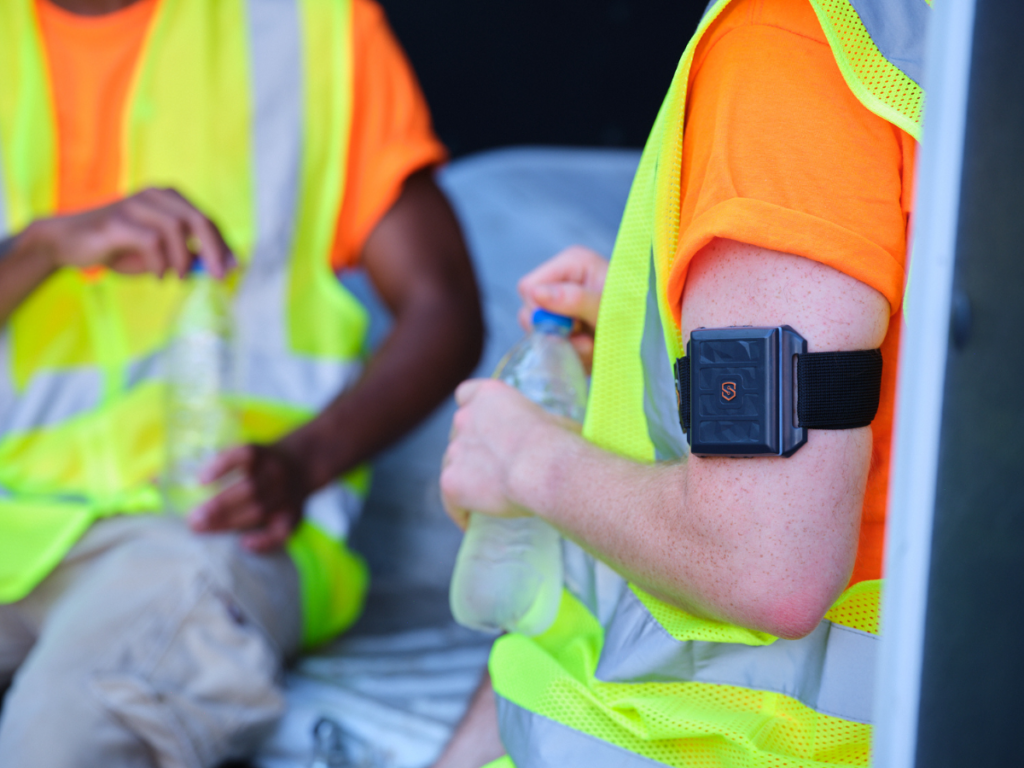OSHA’s upcoming Heat Injury and Illness Prevention rule is set to establish clearer expectations for employers in outdoor and indoor work environments. Heat-related illnesses remain a leading cause of preventable injury, and the new regulations aim to ensure organizations actively protect their employees.
This new rule expands on the National Emphasis Program (NEP), an initiative to help prevent heat-related illnesses in both indoor and outdoor workplaces through increased inspection and outreach. The NEP targets over 70 high-risk industries across the United States, where Bureau of Labor Statistics data shows higher-than-average incidence rates of heat-related illness. Examples of these industries are Manufacturing, Construction, Natural Resources, and Mining.
Heat Stress monitoring has become increasingly critical as workplace safety regulations evolve. OSHA states the reason for increasing heat standards is:
- The danger of extreme heat increases each year due to the continuing effects of climate change
- 18 of the last 19 summers were the hottest on record
- Workers suffer over 3,5000 injuries and illnesses related to heat each year in the U.S.
- Low-wage workers and workers of color disproportionally make up the population of employees exposed to high levels of heat, intensifying socioeconomic and racial inequalities.

SlateSafety’s BAND V2 wearable device provides real-time physiological monitoring while the BEACON V2 environmental monitoring device measures ambient temperature related directly to the standards such as air temperature, estimated wet bulb globe thermometer, heat index and humidex. Overall, SlateSafety’s devices offer comprehensive solutions for compliance with emerging heat stress standards coupled with proactive worker protection.
Why OSHA is taking action
Heat stress develops quickly, and its effects range from fatigue and dizziness to heat stroke and even death. OSHA’s rulemaking focuses on:
- Ensuring employers monitor and assess heat exposure
- Protecting workers through proactive interventions, like rest breaks and hydration
- Maintaining records to demonstrate compliance and safety practices
- Educating employees about recognizing early signs of heat stress
Proactive monitoring addresses these areas directly, providing real-time insights that allow employers to act before an incident occurs.
Key Employer Requirements in OSHA’s Proposed Heat Rule
- Written Heat Illness and Injury Prevention Plans (HIIPPs)
- Heat monitoring (environmental and worker exposure)
- Providing sufficient drinking water
- Accessible rest areas with shade or air movement
- Acclimatization plans for new and returning employees
- Employee training on risk factors, symptoms, and emergency response
- Hazard alerts
- Observation systems
- Signage
- Recordkeeping
How SlateSafety aligns with OSHA requirements
| OSHA Requirement | How SlateSafety Helps | Benefit to Employers |
| Heat monitoring | Tracks temperature, humidity, heat index, and worker vitals (including Core Body Temperature) in real time | Early detection of unsafe conditions; proactive interventions |
| Acclimatization plans | Tracks new or returning workers’ physiological responses over time | Objective data to guide safe work-rest cycles |
| Employee training | Real-time feedback reinforces training on risk factors and symptoms | Builds awareness and safer habits |
| Hazard alerts | Automatic notifications when thresholds are exceeded | Immediate action reduces risk of incidents |
| Observation systems | Remote monitoring supplements supervisor observation | Improves visibility of worker status across sites |
| Recordkeeping | Automatically logs environmental and physiological data | Simplifies compliance and provides audit-ready evidence |
Deeper dive into each requirement
Heat Monitoring
OSHA emphasizes continuous awareness of environmental conditions. Monitoring temperature, humidity, and heat index in real time provides supervisors with actionable information before workers reach unsafe thresholds. Combining this with physiological monitoring adds another layer of protection by identifying how conditions are impacting employees individually.
Acclimatization Plans
New and returning employees are especially vulnerable to heat stress. Monitoring their physiological responses during the acclimatization period gives objective data on how they are adjusting, helping supervisors fine-tune work-rest schedules and reduce risk. This supports OSHA’s requirement to gradually build heat tolerance.
Employee Training
Training is most effective when it connects theory with experience. Real-time feedback from monitoring devices reinforces training by showing workers when they are approaching unsafe levels. This helps employees recognize early signs in themselves and coworkers, strengthening long-term awareness and safety culture.
Hazard Alerts
A key part of OSHA’s rule is ensuring workers and supervisors know when conditions are unsafe. Real-time technology provides automatic alerts when thresholds are exceeded, whether environmental or physiological, enabling immediate intervention and reducing the likelihood of incidents.
Observation Systems
Employers are required to observe workers for signs of heat illness. Technology expands visibility by giving supervisors real-time insights into the status of multiple employees across a jobsite. This supplements direct observation and makes it easier to detect issues early, especially in large or dispersed crews.
Recordkeeping
Documentation is a cornerstone of OSHA compliance. Automated data logging simplifies the process, capturing both environmental conditions and physiological alerts without additional administrative burden. This provides audit-ready records that demonstrate an employer’s proactive approach to managing heat risks.
Practical steps to implement monitoring in your workplace
- Conduct a heat risk assessment and identify high-risk roles
- Equip teams with physiological monitoring or provide real-time environmental sensors.
- Set thresholds for alerts based on activity, role, and environmental conditions
- Track exposure and responses to refine work-rest schedules
- Use collected data to inform training, safety talks, and policy updates
Conclusion
Heat-related illness is preventable. OSHA’s upcoming rule provides an opportunity for organizations to step up, protect employees, and reduce incidents. By combining environmental and physiological monitoring, employers gain real-time insight, actionable alerts, and robust documentation, helping them stay ahead of the rule while strengthening workplace safety culture.
Currently, the comment period is open until October 30, 2025. More information about submitting comments can be found at regulations.gov.

